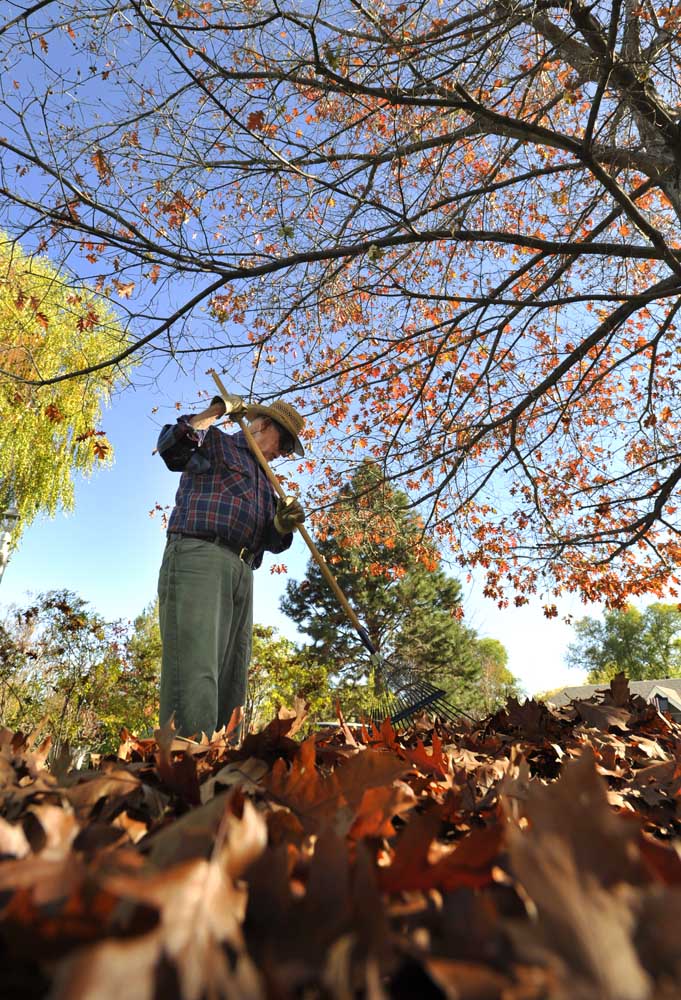Prepping your landscape for fall
Published 1:00 am Thursday, October 1, 2020

- Get ready to rake the leaves — fall is here.
One of the signs of approaching fall weather is when my colchicum bulbs (fall crocus) start breaking ground. I’m puzzled this year. They started blooming on Sept. 18. Notations from past years indicate the bulbs usually bloom at least two weeks earlier. Whenever they bloom I am happy to see the fresh color in the rockery, but also saddened to think it is time to get busy with fall chores.
Part of my rockery, which was in full sun 25 years ago, is now in almost full shade. It is time to move some plants around and develop a shopping list for shady plants. The plants to move are the basket-of-gold alyssum. There are five plants which will do nicely to fill the area I’m prepping with enough room for increasing.
This is the time of year when I ask: Should I or shouldn’t I divide perennials? The earlier the better to insure the roots can settle in before a hard frost. Always amend new planting holes by mixing compost with the native soil. Irrigate the planting area the day before planting and then give a good soak when you plant. When digging large clumps, examine the roots to find places that will easily pull apart by hand. If the root mass is too solid you may have to use a knife. Remove any areas that look dead. The new hole should be twice the diameter of the root ball. If the perennial is still in bloom, remove the flowers. All the plant energy needs to go to the root system, not opening flower buds. Wait till spring to fertilize. You don’t want to stimulate growth at this time of year.
Perennial plantings do need your attention. Many plants do better surviving with a covering of 5 or more inches of mulch. There is a long list of perennials that do not need the mulch. The lists are available in an Oregon State University Extension publication at extension.oregonstate.collection/central-oregon-garden-publications. Scroll to the “landscape plants” section and then to “winter care of perennials.” Mulching for perennials and for bulbs is applied after a hard frost.
Perennials can be cut back to 6 to 8 inches above ground. The remaining plant will help to hold snow and insulate the root system. I don’t mind the sight of the dying or dead foliage because the dried seed heads provide feed for birds, so I leave that chore for the spring.
I admit to having heart palpitations in the fall when I pass a landscape where ornamental grasses are being cut back. One of the added benefits of having ornamental grasses is the winter interest they provide — plus they are valuable to the birds. Maintenance is traditionally done in early spring. Some grasses are maintained by “combing out” the dead foliage. Others are cut back to approximately 6 to 8 inches; some prefer to go no shorter than 12 inches.
Rake up fallen fruit. You may think you are helping feed wildlife. If that is your purpose, dedicate an area for disposal. Fruit cleanup helps to prevent diseases and insects from overwintering close to your trees, jeopardizing the health of your fruit tree.
Major pruning of ornamental trees can be put on the late winter or early spring list. What is important is to assess trees with a critical eye looking for branches that might cause a problem from a snow overload, causing it to break off and do damage to structures.
Last, but not less important is the arduous task of raking pine needles and gutter cleaning. Raking fallen leaves never seems as big a task as raking the pine needles. Perhaps that is because we place a greater value on the leaves, adding them to a compost pile or using them to cover plants when the time is right.
Fall is a good time to do some self-evaluations of what your expectations are for your piece of property. Are your physical capabilities the same as they were a year ago? What about the time you can devote to gardening? Make the mental adjustments now so you can spend the winter making plans to adjust to new ideas and new ways of accomplishing your goals.








